Course:PHYS341/2022/Project30
Music Reverberation for the Hard of Hearing
By Megan Housley and Kayla Rosie
Background
Reverberation
Sound reflects off all objects (furniture, fabrics, and walls), and this is known as reverberation. Reverberation is not always a bad thing; the design of a room can increase and decrease reverberation. One reason that we may want to increase the reverberation of a room are in auditoriums or lecture halls to push sounds to the back of the rooms and fill the large spaces. A time we want to decrease reflection of sound waves (reverberation) are in recording studios and kitchens. A few ways to decrease reverberation can be to add furniture and paintings to a room, which allows sound to be absorbed. For regular speech, longer reverberation times can make it harder to perceive speech compared to shorter reverberation times because the reflections of the sound waves blur the acoustic speech content. However, a certain amount of reverberation is needed for enjoying music as it enriches the sound, making it sound fuller with warmer timbres[1]. Reverberation is a concern when it comes to getting fitted for hearing aids. Many other factors such as lifestyle, age, and habits play a large effect. Specifically we will look at how hearing aids process music.
Hearing Aids
Hearing aids are designed for spoken speech and therefore face some limitations when taking in sounds that are not spoken directly (ideal distance 3-6 feet)[2]. Hearing aids would be affected differently by music than by speech due to the differences in average frequencies. Speech usually has a frequency of 250-8,000 Hz with the average words being at 1,000-4,000 Hz. Music frequencies range from 50 Hz (like a deep bass) to 16,000 Hz (overtones and resonances, like a cymbal).[3]Hearing aids are not yet equipped to deal with this increase in frequencies and large changes in intensity[4]that music produces, some limitations are bellow.
Hearing aids are now designed with a feature to compress frequencies in order to increase auditory control by bypassing cochlear dead regions. Frequency compressing is strongly advantageous for direct speech, but due to music's quick frequency shift the one-to-one harmonic ratio becomes much more complex, leading to "music that sounds distorted, out of tone, or otherwise unpleasant"[4].
Structures
Ear Drum
The ear drum resembles a drumhead, vibrating as a result of areas of higher pressure air reaching the ear, increasing the number of collisions against it and therefore there is a greater force placed on it. For people with conductive hearing loss, it may have been caused by a perforation for the ear drum, so the inner ear is not receiving the vibrations felt by the ear drum because it is not functioning correctly. In these cases, the hearing aid amplifies the sound waves so that they can reach the cochlea[5].
Middle Ear
The middle ear works like a sort of amplifier. The three ossicles (bones) in the ear transfer the sound energy and vibrations from the ear drum to the cochlea[6].
Hair Cells
The hair cells in the cochlea are similar to a spectrum graph because they both analyse and correspond to individual frequencies. At a point in time the sound corresponds to either a line on the graph or a hair cell that relays information to our brain. Pure tones excite different areas along the basilar membrane, so where you see higher levels of nerve cell firing, these frequencies are more prominent in a sound[6]. Sensorineural hearing loss is caused by death of hair cells in the cochlea meaning that these frequencies are not identified by the ear and signals sent to the brain[5].
Measurements
To present our environments in a physical way, we will show reverberation and resonance frequencies of different spaces through time graphs and spectrum graphs respectively.
Time Graphs

Time graphs are used to demonstrate reverberation and any echoes present in the environment. We will be specifically comparing The Health Sciences Parkade and an empty field. These environments present different reverberation levels due to the nature of their design. In an empty field sound can disperse and there are no objects to push sounds back. In comparison, the Health Science Parkade has minimal natural ventilation, hard-surfaced walls and floors which reflect and amplify noises[7].

For hearing-aid users, sound and reverberation are limited as much as possible in order to bring clarity to a speakers words. The design to reduce background noise could cause echoes or whistling.[4]This feedback management uses wave phases to cut out higher frequencies and whistling, this feature is very helpful for speech but can lead to cutting out instruments such as flutes. Sending out a frequency that is largely different than the one coming in will make the two frequencies be out of phase with each other.
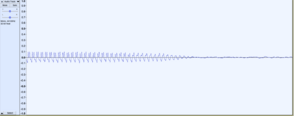
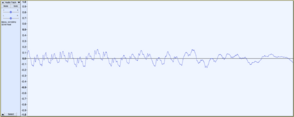
Spectrum Graphs
The reason for looking at spectrum graphs is to demonstrate how different environments make certain frequencies resonate more. This is useful for when designing hearing aids because creating adaptability to hearing aids that change with the environment is important. Environments do more than just reflect and amplify sounds; they also can influence what frequencies are prominent which is why these types of measurements are important when designing hearing aids that are adaptable.

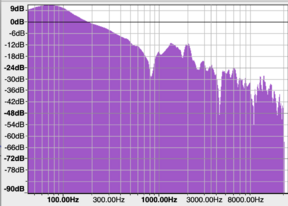
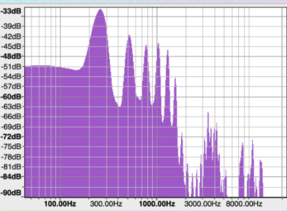
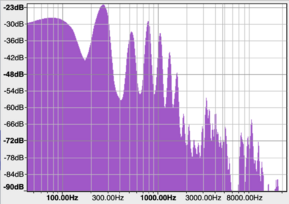
Comparison
We see more distinct peaks and valleys in the hum compared to the clap. This is due to the musical and periodic nature of holding a hum where we can identify different harmonics. From the spectrum graph, we can see that in the field setting, the lower frequencies are amplified more than in the parkade. The clearest evidence from the graphs of the differing reverberations of the parkade and field can be seen in the clap time graphs. In the parkade, we can see that there are more peaks and valleys during the initial sound which then die-away before only background noise remains. This is not the case in the field where the sound of the clap dies away almost instantaneously. In the hum time graphs we see that in the field, the reduces to aperiodic background noise, like the clap, almost as soon as the sound ends whereas in the parkade, there is a decrease in amplitude of the sound as the waves reverberate in the space.
Strategies
There are ways for hearing aid users to enjoy all types of music. A few strategies that can specifically help with the experience of music for people who use hearing aids are as follows:
- Disable automatic functions to tailor your settings as needed
- Turn off or minimise feedback
- For live music performances, adjust microphone direction
- Adjust maximum power output to increase clarity of music (some prefer this setting increased and some prefer it decreased)[4]
However, unless the "various electro-acoustic parameters are available in a hearing aid" music will always be transmitted and perceived as less than optimal [4]. This distortion of music will effect different users differently, especially depending on when they lost their hearing.
Conclusion
The ear is an amazing and unique structure that allows us to process and experience the world. Music is a tool many people use to influence ones mood, songs can make you happy, sad and even angry. The different frequencies and uniqueness of each song, instrument and chord is what contributes to the experience music brings. Music is a diverse phenomenon, all genres, instruments and notes with some shared and some different characteristics which is what makes music fascinating. Just like music, hearing loss is unique, which is why it is difficult to give one answer on how to improve listening to music so that the added reverberations can be enjoyed, especially because reverberations affect music and speech in different ways with more reverberations wanted for music and less for speech. Furthermore, we also have to consider the environment that a listener is in because it will greatly affect the sound reverberation and hearing aids need to be adjusted for this so that the listener has the most enjoyable listening experience.
As described above there are techniques people who use hearing aids can use to gain more experience listening to music and ultimately the listener knows what is best for them. Overall, hearing is a very complex process with many integrated parts and replicating this process into a small all-encompassing device is not a small feat. Hearing aids and music have come a long way, but due to our ever-changing and rapidly evolving environment, hearing aids and devices must evolve with us. In order to do this, more research must be done on the human ear and ways to replicate this extremely adaptable process.
References
- ↑ Reinhart, P. N.; Souza, P. E. (2018). "Effects of Varying Reverberation on Music Perception for Young Normal-Hearing and Old Hearing-Impaired Listeners". Trends in Hearing.
- ↑ Islam, MD Jahurul. “Audiologic Rehabilitation” Clinical Topics in Speech, Language, and Hearing Sciences", March 3, 2021, University of British Columbia. Lecture.
- ↑ University of Iowa Health Care. "Hearing Aid (HA) and Music: Limitations and Problem Solving Strategies: Information for Audiologists".
- ↑ 4.0 4.1 4.2 4.3 4.4 Chasin, Marshall; Russo, Frank A (2004). "Hearing AIDS and music". Trends Amplif: 8(2):35-47. doi:10.1177/108471380400800202 – via PMID: 15497032; PMCID: PMC4111358.
- ↑ 5.0 5.1 Islam, MD Jahurul. "Understanding Hearing Assessment" Clinical Topics in Speech, Language, and Hearing Sciences, February 22, 2021, University of British Columbia. Lecture.
- ↑ 6.0 6.1 Van Raamsdonk, Mark. "Perception of frequency and loudness" The Physics of Music, March 9, 2022, University of British Columbia. Lecture.
- ↑ KSM Group (Nov 6, 2018). "Controlling Noise Levels in Underground Car Park".